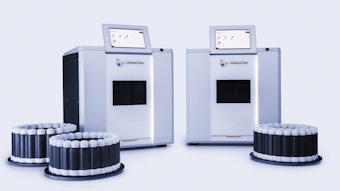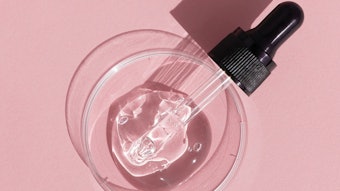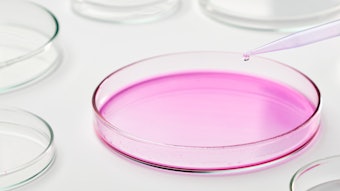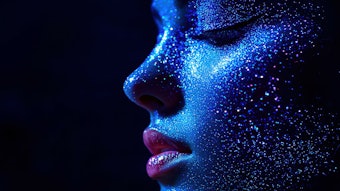Continuing a previous exploration1 of measuring hair-related attributes and related concerns, another commonly heard worry is that hair will “dry out” and accordingly, consumers may avoid treatments, environmental conditions and even ingredients that are perceived to induce this state. When this condition is recognized by the consumer, products that moisturize or hydrate hair are demanded in an attempt to “restore hair’s natural moisture balance.” However, to the hair care scientist, these statements are puzzling. For a start, it is well-recognized that the water content of hair is overwhelmingly dictated by the relative humidity (RH) of the environment—but while consumers profess a desire for “maximum moisturization,” the high humidity conditions that induce this state represent the very definition of a bad hair day. Moreover, technically, as hair becomes more damaged it has a higher affinity for water. The number of water adsorption sites is increased within the fiber as hydrophobic cross-linking disulfide bonds are converted to hydrophilic cysteic acid moieties. Also, the outermost, water-repellent surface of hair is more likely to be removed (the lipid “f” layer). Therefore, theoretically, the consumer term dry, damaged hair would seem contradictory.
Log in to view the full article
Continuing a previous exploration1 of measuring hair-related attributes and related concerns, another commonly heard worry is that hair will “dry out” and accordingly, consumers may avoid treatments, environmental conditions and even ingredients that are perceived to induce this state. When this condition is recognized by the consumer, products that moisturize or hydrate hair are demanded in an attempt to “restore hair’s natural moisture balance.” However, to the hair care scientist, these statements are puzzling. For a start, it is well-recognized that the water content of hair is overwhelmingly dictated by the relative humidity (RH) of the environment—but while consumers profess a desire for “maximum moisturization,” the high humidity conditions that induce this state represent the very definition of a bad hair day. Moreover, technically, as hair becomes more damaged it has a higher affinity for water. The number of water adsorption sites is increased within the fiber as hydrophobic cross-linking disulfide bonds are converted to hydrophilic cysteic acid moieties. Also, the outermost, water-repellent surface of hair is more likely to be removed (the lipid “f” layer). Therefore, theoretically, the consumer term dry, damaged hair would seem contradictory.
To unravel the mystery of these contradictions, it is necessary to have a precise and accurate means of measuring the water content of hair. This article describes the use of commercially available scientific equipment to perform this task while highlighting experimental variables and pitfalls that can produce suspect results and lead to incorrect conclusions.
The Adsorption Isotherm
There is an entire scientific discipline relating to the adsorption of gaseous species onto solids. This topic is of particular importance in optimizing the effectiveness of catalysts and, as more recently discovered, in the ability to store various gases; for example, to power natural gas vehicles. As such, there are well-established principles and means of manipulating and expressing data. An adsorption isotherm reflects the amount of a given species that adsorbs as a function of its relative abundance in the atmosphere. In the case of water, its abundance in the environment is represented by the RH, and so the hair-water isotherm in Figure 1 illustrates the equilibrium water content of hair, sometimes called the regain, as a function of humidity. The solid data points in this graph were reported by Chamberlain and Speakman2 in 1931, and represent the earliest version of this relationship in the scientific literature; meanwhile, the hollow data points were generated 80 years later by this author using today’s modern scientific equipment.3
There are two important takeaways from this graph. First, the water content of hair fluctuates in a predictable and reproducible manner in accordance with the RH. That is, the water content of hair is not constant; it dynamically changes to adjust during everyday life to differing atmospheric conditions from room to room, indoors to outdoors, etc. Second, the reproducibility of this relationship is very strong—and despite consumer language pertaining to “dry hair” and/or the moisturizing or hydrating propositions relayed on products, the shape of this curve is not markedly changed by conventional daily use treatments.4
‘Consumer’ vs. ‘Scientific’ Language
Since the findings noted are contrary to consumer perception, some researchers have been prompted to pursue alternative measurement approaches to better reflect the expected outcome. However, a recurring theme in work published on measurements to quantify hair-related attributes is the disconnect between “consumer” and “scientific” language. To illustrate this point, attention is drawn to the illuminating work of Davis and Stofel.5 They controlled the water content of hair tresses through equilibration at different humidity conditions before presenting them to panelists for assessment. It was found that hair equilibrated at lower humidity was overwhelmingly preferred—with these conditions actually being described as making hair feel “more moisturized.” Conventional conditioning treatments are widely seen by consumers as being effective in providing moisture even though technical measures show no actual change in water content. Therefore, other factors must be responsible for this perception. A likely explanation involves the lubrication delivered by products to mask a rough, coarse and “dry” feel and produce a pronounced improvement in hair quality that is described by consumers as “moisturization.”
Consumer language aside, it is well-recognized that the technical properties of hair change dramatically as a function of moisture content. This occurs because water solvates secondary strength-supporting hydrogen bonds and salt bridges within the hair, which produces a decrease in mechanical properties and a swelling of fiber dimensions. In short, the water content of hair is so central to its intrinsic properties that any study where the RH has not been controlled, recorded and reported may be open to dispute. Again, the need for a means of quantifying this important property is clear.
Experimental Set-up
The adsorption of gaseous molecules will lead to an increase in sample weight, which in early days was measured by means of a highly sensitive microbalance called a McBain balance. In today’s modern electronic era, the technique used for this measurement is commonly termed Dynamic Vapor Sorption (DVS). Figure 2 shows a schematic of this approach, which also involves a microbalance that is housed within a quartz manifold, allowing for continuous monitoring of the sample weight while the RH is adjusted by gas flow controllers and feedback sensors. The whole unit resides in an incubator to allow for precise temperature control.
To generate an adsorption isotherm, it is first necessary to desorb any existing water from the test sample. This is accomplished by allowing the sample to reside in the instrument at 0% RH for a prolonged period of time. Once this condition is achieved, the balance is tarred and the experiment can begin. Testing generally involves constantly recording the weight of the sample as it is allowed to equilibrate at a series of increasing humidity conditions. Figure 3 shows an example of such an experiment, wherein the RH was stepped from 0% to 90% in 10% increments.
Experiment Duration
Without doubt, the biggest complicating factor in performing these experiments involves the length of time required for hair to equilibrate at each humidity condition. There are a number of parameters that contribute to the moisture adsorption rate (noted later), but for the experiment shown in Figure 3, it will generally take somewhere around 6–8 hr for hair to reach a reasonable approximation of equilibrium at each new condition; although in actuality, the weight will still be increasing slightly, even after 24 hr. Put another way, the equilibrium adsorption results obtained at each condition are strongly dependent on the patience of the operator. This point extends further to the drying period, where clearly, higher absorption is attained in hair samples that have been more thoroughly dried. Therefore, some standardization of the drying process is also necessary. One recommendation would be to allow the hair to equilibrate at 0% RH for 48 hr prior to beginning the experiment.
Tallying these time spans, it becomes evident that a single DVS adsorption experiment run under the preferred conditions takes a number of days to perform. Accordingly, the approach is clearly not a fast screening method and as a result, it is not uncommon to search for various shortcuts in an attempt to speed the data collection process. However, it is again emphasized that changes to the adsorption isotherm as a function of various treatments are small at best, and therefore meticulous experimental conditions are required to yield confident end results.
Experimental Pitfalls
One drawback of any automated device is that it can become a “black box,” running through its motions and outputting seemingly believable data regardless of how tests are run. In short, the operator can be lulled into an “auto-pilot” mode while plowing through sample after sample, giving little thought to the presence of important experimental variables. It is worth drawing attention to some instances where misleading results can be obtained.
It is often speculated that the application of oils to hair can alter water content, perhaps by forming an occlusive surface layer. However, once the oil is applied, the initial weight of the sample is now a combination of the hydrophilic hair and the hydrophobic oil. For example, raising the RH from 0% to 90% produces an approximate 22% increase in the weight of hair (see Figure 1). Therefore, a 25 mg hair sample would increase in weight to 30.5 mg—i.e., 25mg × 1.22, over the course of this change in conditions. However, if the hair has been treated with oil at a 10% dosage level, the initial 25 mg sample now consists of 22.5 mg of hydrophilic hair and 2.5 mg of hydrophobic oil. As such, a 22% increase in the 22.5 mg hair sample, minus the oil, would result in 27.45 mg. The weight of the oil would remain constant at 2.5 mg, and the total sample weight would become 29.95 mg. This experiment instead suggests a 19.8% increase in weight and gives the impression that adsorption properties of hair have been altered—but in actuality, the outcome is an artifact of the convoluted original sample weight.
With differences in the equilibrium water content of hair not readily being observed, attention frequently turns to the possibility of altering the rate of water adsorption and desorption but this area is hampered by still more artifacts.2 By means of illustration, the rate of adsorption is greatly impacted by the sample size. Larger samples give rise to slower adsorption rates due to the presence of a diffusion gradient—i.e., the outer portions of the sample provide a degree of insulation to the interior. Therefore, apparently different adsorption rates in two seemingly comparable DVS experiments could simply be the consequence of different sample sizes. The rate at which moisture adsorbs is also highly dependent on the initial and final humidity conditions, so caution must be exercised when considering the moisture adsorption rates reported, as these will be specific to the conditions employed.
Conclusions
It is again emphasized that conventional hair care products and treatments have minimal, if any, effect on the water content of hair but there is precedent in the scientific literature for effects from unconventional treatments. Specifically, it has been reported that soaking hair in both phenol6 and acid7 solutions can lower the water content of hair. This is an area of ongoing research interest for this author. Figure 4 shows adsorption and desorption isotherms for hair soaked in a 5% Cl-resorcinol solution, illustrating how it is possible to reduce the water content of hair by up to 40%.
Initially, this may seem to be a bad idea, as the industry is intimately aware of consumer concerns for “drying out” hair. Yet, it is becoming ever more evident that hair possesses improved physical and aesthetic properties when the water content is minimized. This would represent a significant paradigm shift in an industry that previously has sought to moisturize and hydrate hair.
With or without the paradigm shift, there is the need for accurate and reliable means to quantify the water content of hair. Generating adsorption isotherms via DVS represents an established scientific approach that readily translates to the industry’s needs. However, patience is required to produce good quality data, and questionable results and conclusions can easily be obtained without appropriate experimental care.
References
- T Evans, Measuring hair strength, part II: Fiber breakage, Cosm & Toil 128(12) 854–859 (Dec 2013)
- N Chamberlain and JB Speakman, Uber hysteresisersheinungen in der wasser-aufnahme des menchenhaares, J Electrochem 37, 374 (1931)
- TA Evans, Adsorption properties of hair, in Practical Modern Hair Science, TA Evans and R Randall Wickett, eds, Allured Business Media, Carol Stream, IL (2012)
- FJ Wortmann, A Hullmann and C Popescu, Water management of human hair, IFSCC Magazine 10(4) (2007) pp 317–320.
- MG Davis and S Stofel, Consumer perception versus single and bulk fiber technical measurements, Proc 16th International Hair Science Symposium, Weimer, Germany (2009)
- MM Breuer, Binding of phenols by hair I-III, J Phys Chem 68, 2067-2073 (1964)
- CH Nicholls and JB Speakman, The adsorption of water by wool. Part IV—The influence of combined acid on the affinity of wool for water, J Tex Inst 45 T267-271 (1954)










